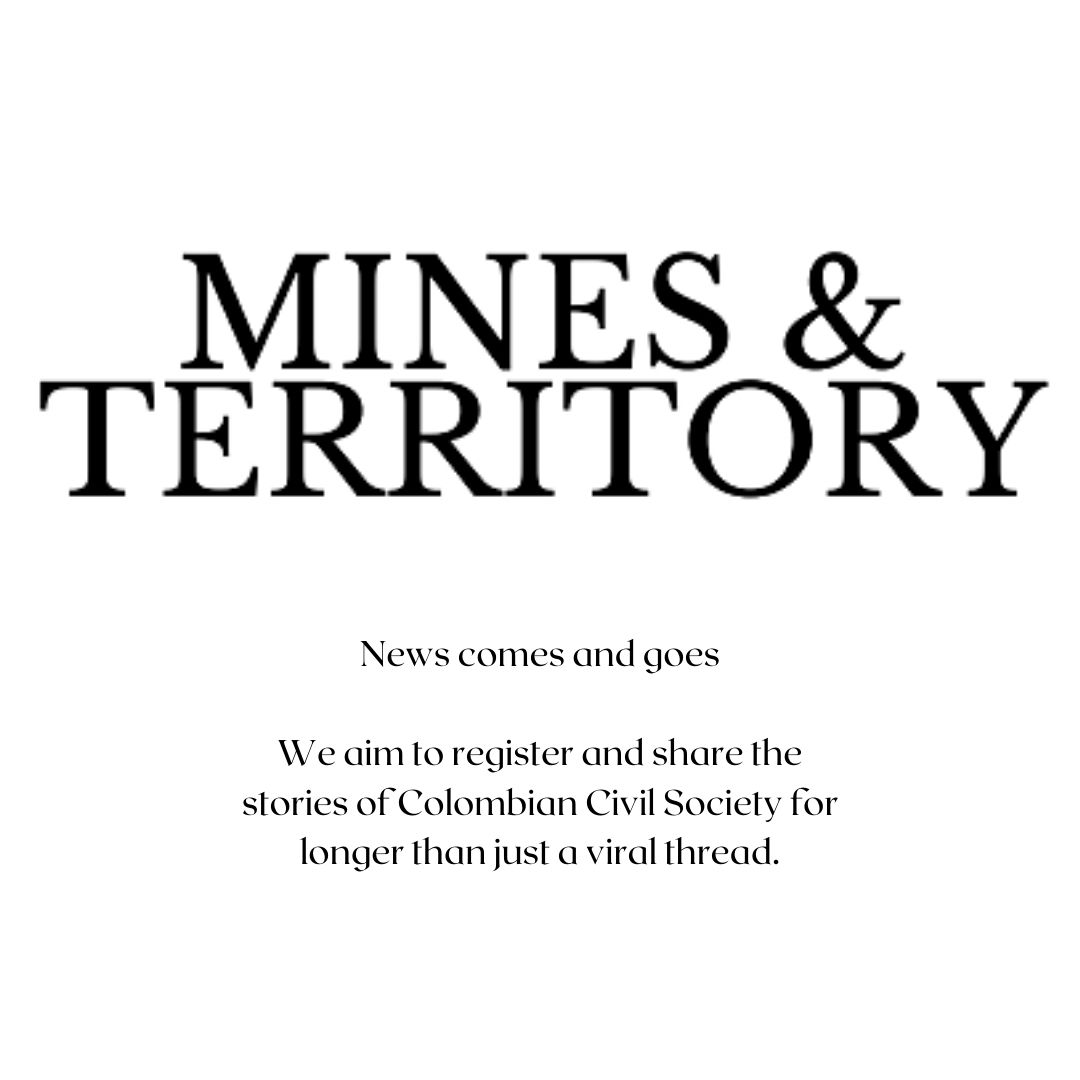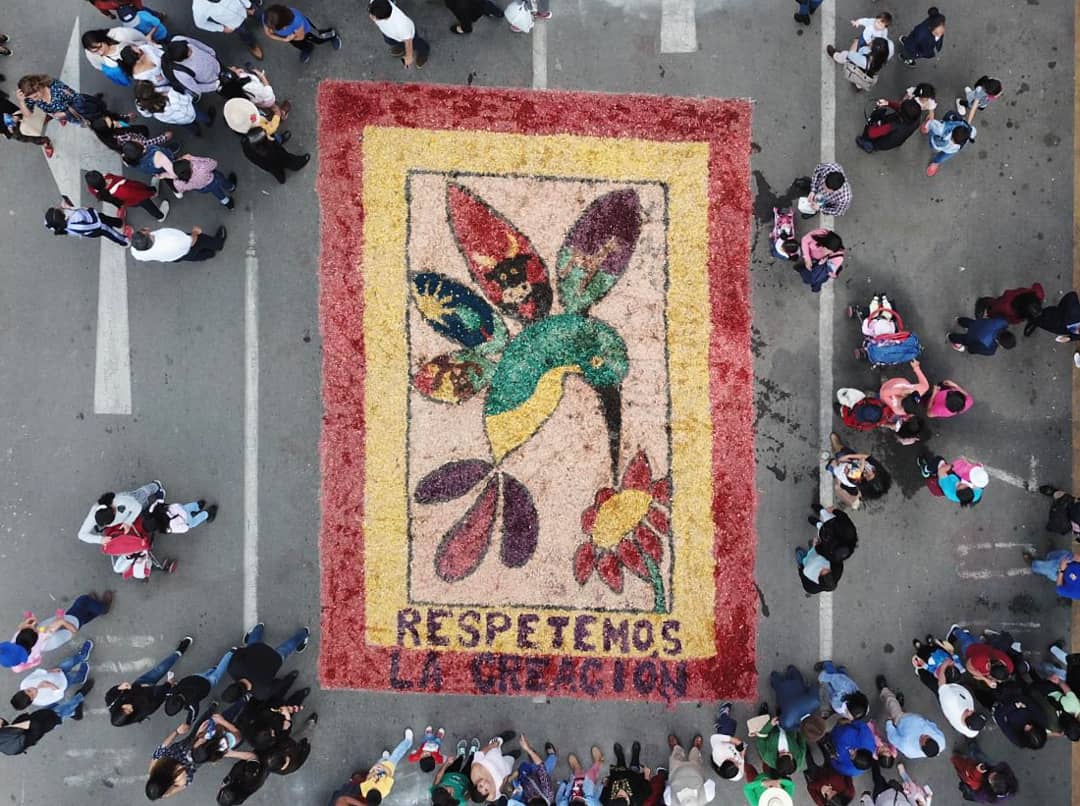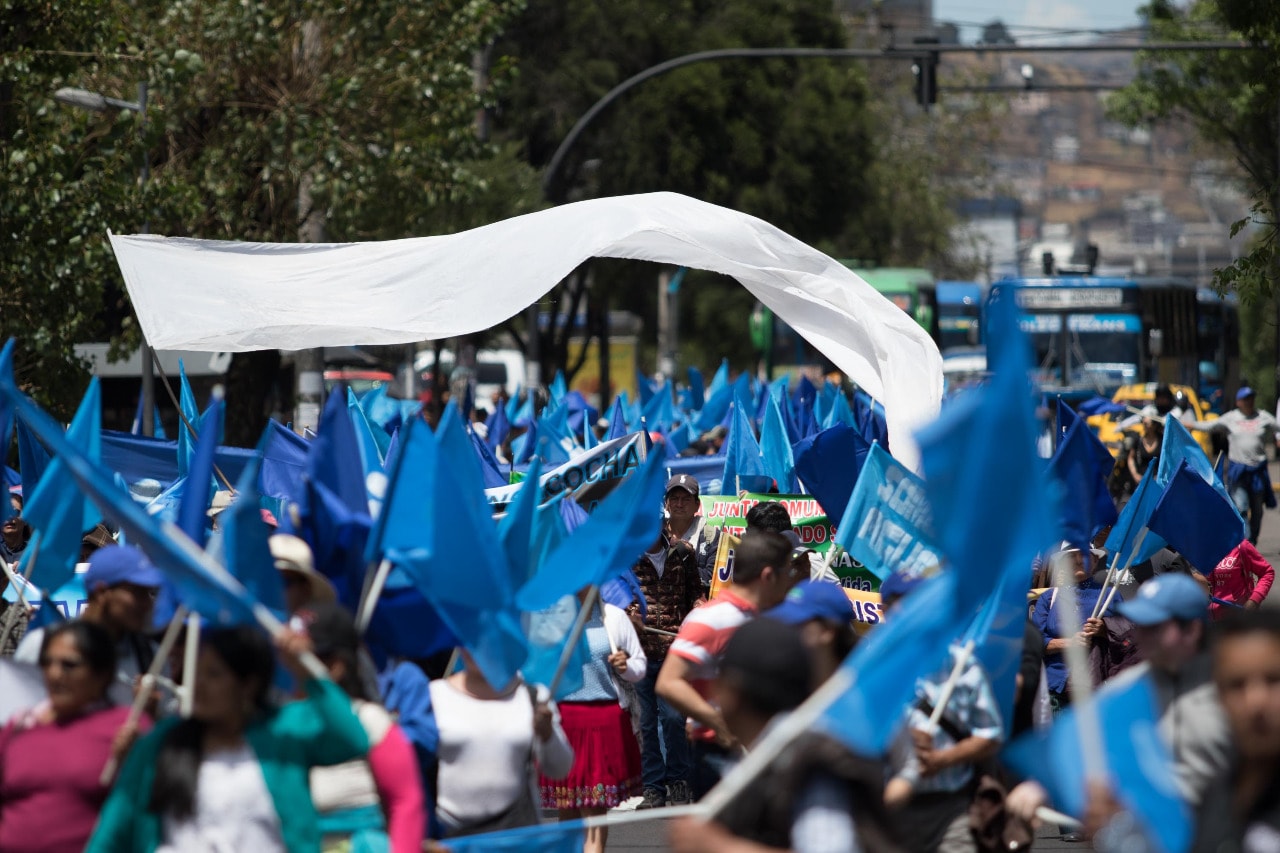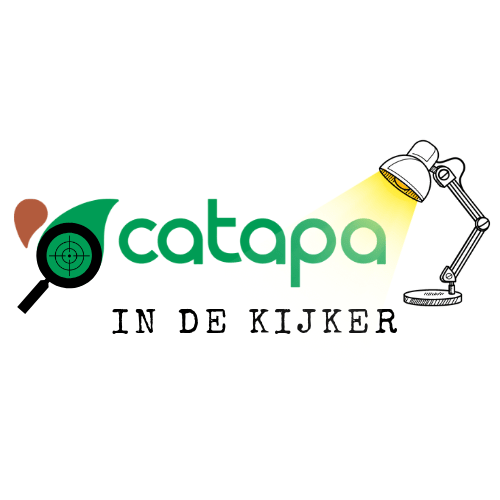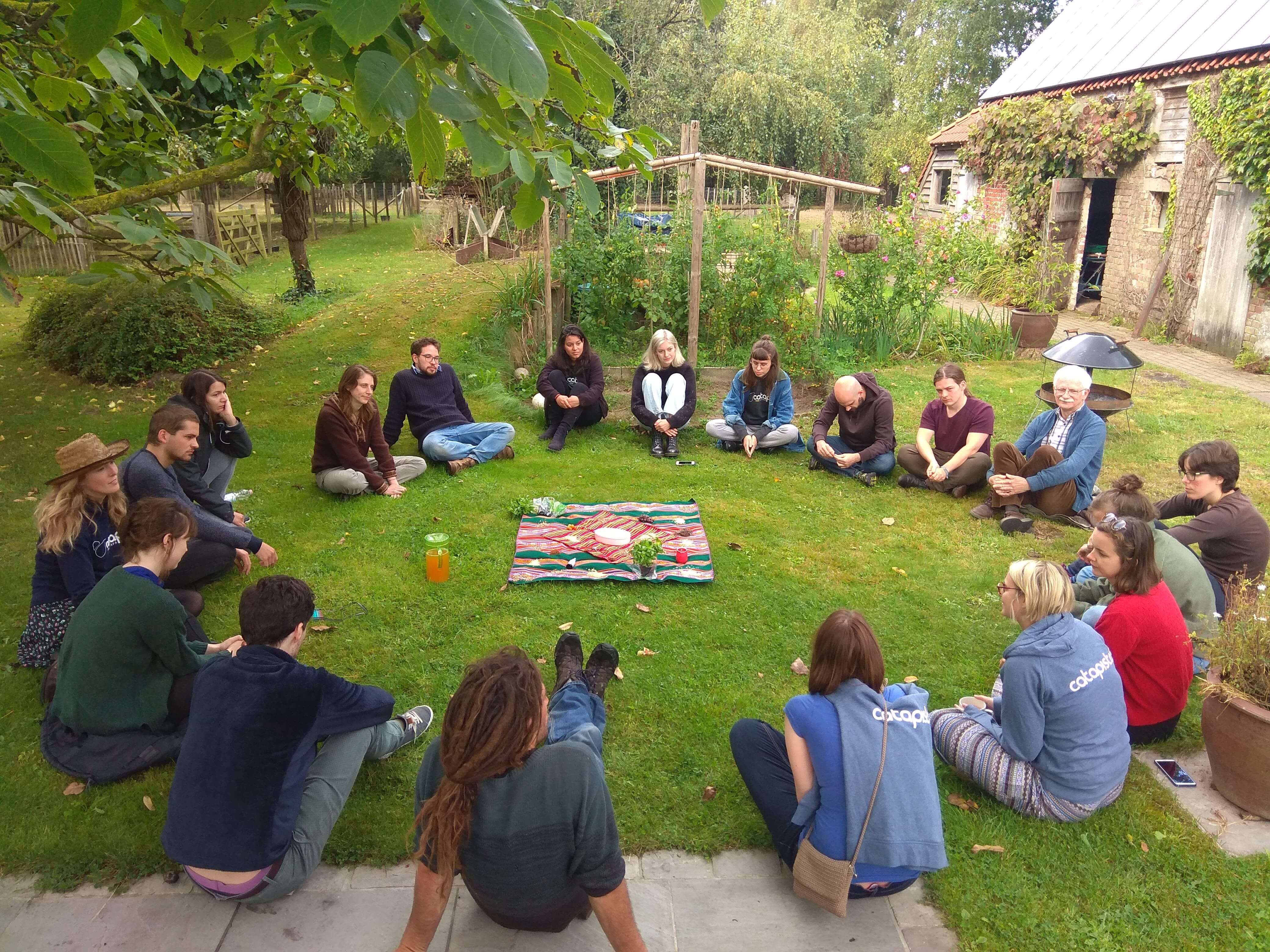Controversial video reveals Minesa’s strategy to avoid the rejection of its mine in Santurbán
The leaked video shows the president of the company Minesa, Santiago Urdinola. Minesa is an Arab company that earlier this year handed in an Environmental Impact Study to the National Authority of Environmental Licenses (ANLA), with the purpose of extracting about nine million ounces of pyrite and copper in the area of Santurbán.
Urdinola exposes in a private meeting the strategy to take forward the environmental license. “If I have the world on fire, but in Bogotá they feel that we are well, then we are fine. If the decision makers feel calm, despite that we’re having a daily march here (…), it works for us “, he says.
The president continues saying that the indicated way to minimize the contradictory voices to the mine is by developing a narrative, a stereotype that represents the protesters as opposition activists, linked to the political movements of Senator Gustavo Petro (former opposition presidential candidate), the Green Party, the Democratic Pole and some elites of Bucaramanga, who would be looking through these demonstrations to overthrow the Government of President Iván Duque. “If they feel that it’s all about Petro marching to overthrow Duque’s government, it works for us (…) The question is how do we make our stakeholders feel calm”, is what’s heard in the video.
According to Urdinola, one of the keys is to present the most effective information to the ministers in charge. To talk, for example, about renewable energies with the Minister of Mines and Energy, María Fernanda Suárez.
Urdinola seems to be disturbed by the frequent news in which Minesa does not seem to be standing well. “There’s going to be a lot of media pressure here. The media likes the history of the angry community, not the story of those we have helped, of the children who’re finally going to school and have access to drinking water thanks to Minesa. The story is one of the community that feels they are going to be resettled. There are about 50 families we’ll have to take out of their territory – where they have lived for over 100 years – because they’re living in the center of the project. That is the media story; which will explode”, he warns.
The video, which lasts almost nine minutes, fell very badly among those who are part of the Committee for the Defense of the Páramo de Santurbán, which for several years has called marches to protest the mining exploitation in the territory.
“We strongly reject the statements made in the video. It is a strategy against the citizens who we had to mobilize 9 years ago to reject the mega-mining in Santurbán. It is a strategy to deceive Bucaramanga, Bogotá and the officials who are making the decisions. It is putting a mantle of doubt in this process of citizen resistance”, says Mayerly Lopez, one of the spokespersons of the Committee.
She points out that, if ANLA approves the environmental license of this project, the water supply of 2.5 million people will be put at risk. “We trust that the ANLA will make a serious and rigorous process. We do not trust the company, and even less after this video”, she said, while revealing that on May 10th they will hold a new march to oppose the Minesa project.
Sources: CONTAGIORADIO ‘Filtran video que evidencia campaña de estigmatización de Minesa contra ambientalistas’; EL ESPECTADOR ‘Polémico video revela estrategia de Minesa para evitar el rechazo de su minería en Santurbán’.
Camera approved the construction of one of Latin America’s biggest port in Tribugá, Chocó
The sections of the National Development Plan that give the constructing of the port a green light were approved yesterday by the Legislative. The decision, although still pending Senate approval, generates worries for communities and experts. It’s estimated that 1,000 hectares of mangrove in the Pacific will be destroyed with this intervention.
The communities of Tribugá, one of the nine corregimientos of Nuquí (Chocó), do not want the port. Its position makes sense: although an investment on this scale promises jobs, development and roads for a region that needs it, the construction of this big port involves going over a territory protected by them: the Regional District of Management – Cabo Corrientes, an ecosystem that not only the communities depend upon thanks to artisanal fishing, the use of mangroves and ecotourism, but where around 8 species of mangroves flourish and where turtles pianguas and small mollusks nest on 971 hectares of beaches, all ensuring the certainty of food in the area.
If approved by the Senate, a port of docks up to 3,600 meters in length would be built, with depths between 15 and 20 meters and a capacity to receive ships of up to 200,000 tons. And all of that in the middle of this natural territory. The port is estimated to be larger and bigger than the Port of Buenaventura and one of the most massive ones in Latin America.
Source: EL ESPECTADOR ‘Cámara aprobó la construcción del Puerto de Tribugá en Chocó’
Inhabitants of Taganga, in Magdalena, denounce the construction of a new port in their bay
Inhabitants of Taganga, in Magdalena, denounce that the Daabon Liquid Bulk Terminal Company (Terlica) is advancing its third modification of the environmental license granted for the construction of a port in the bay, even though the communities mobilized against the project because of the social, economic and environmental effects it would cause.
In 2008, the rupture of a valve at the Terlica facilities in Taganga caused a spill of crude palm oil to the Bay of Playa Grande, affecting thousands of corals and other marine organisms. Despite this historial account and the fact that the company has not yet finished to compensate the damages, the environmental authorities have already approved the first two modifications to the environmental license.
The locals fear that the environmental emergency caused by Terlica in 2008 might happen again, damaging the environment and the way of living of the 6,000 inhabitants of the municipality who depend on fishing and tourism. In addition, evidence points out that an accident at the wharf could cause more serious damage since it’s intended to transport palm oil, chemical derivatives and hydrocarbons through this new port.
Senator Antonio Sanguino of the Green Alliance argues that the environmental license approved by the ANLA is not legitimized. It did not have any consent neither was the project socialized with the communities that inhabit the territory. Besides that, several people involved assume acts of favoring policy in the granting of the licenses and concessions.
“We say no to the Port of the Americas because it would be located within the “linea negra”, which is a theological zone of the indigenous people of the Sierra Nevada, so it requires, first of all, at least a prior consultation with the indigenous community,” he said.
Sources: CONTAGIORADIO ‘”¡No queremos muelle!”: el grito de los habitantes de Taganga’; REVISTA7 ‘Nuevo Puerto en Taganga ¿en veremos?’
What did the social leaders who installed the ‘humanitarian shelter’ in Bogotá accomplish?
For nearly a week about 2,000 leaders from across the country gathered in the capital to make a call to the National Government and the international community for the lack of security guarantees in their territories. They were in Congress, in several embassies, they demonstrated and carried out important commitments.
“It’s just unthinkable that we are at the discretion of a president who thinks more about Venezuela than about Colombia (…) While he calls for peace in Venezuela, right here in Colombia leaders get assassinated, threatened, and taken out of their lands”, says senator Aída Avella in her speech to thousands of social leaders who arrived in Bogotá to combat what they consider the neglect of the government of Iván Duque to the violent wave against human rights defenders in the country.
The spokesmen of the shelter indicate that the general goal of the humanitarian shelter and the sensibilization of the public opinion in the big cities about the crisis on the countryside, was reached. They also managed to sensitize the embassies, to make them aware of the situation, and they assumed the commitment to talk with the National Government so that the topic of protecting social leaders can be better addressed”, explains Alejandra Llano of the ‘National Indigenous Organization of Colombia’ (ONIC). Apart from that, Ricardo Arias, Director of Human Rights of the Ministry of Home Affairs, affirmed publicly that the National Guarantees Roundtable, a space of direct dialogue between social organizations and several entities of the National Government – which was suspended since the arrival of Iván Duque to the Presidency – would be reactivated soon.
However, they are left with lots of questions regarding the responses of the Government, particularly by the Attorney General’s Office. A main issue is the sample of results in the investigations on the armed structures in charge of executing the murders of social leaders, about which they have asked for explanations without success. Supposedly, the findings in this regard are minimal…
Source: EL ESPECTADOR ‘¿Qué lograron los líderes sociales que instalaron el refugio humanitario en Bogotá?’
Prosecution requests precautionary measures for environmental damage of Hidroituango
It is a request based upon the work developed by a team of 9 experts, engineers, biologists and ecologists who, supported by the Judicial Police, were in Hidroituango investigating possible environmental damage.
Among the conclusions is the finding of risks for water springs, fauna, flora and the life of the inhabitants. A first risk is the arrival of ‘el buchón’, explains Néstor Humberto Martínez, the Prosecutor. It is an invasive plant that already expanded among 8.5 kilometers due to the strong winds. The presence of this plant causes un unsmooth running of the water current and a reduction of the self-regulating processes of the ecosystems, which leads to the disappearance of animals that inhabit the river.
A second measure is related to an abandoned asphalt fabric on the San Andrés river, explained the Prosecutor. At the moment there are residues that fall into the water, which from the San Andrés river pass to the Cauca and finally to the Magdalena, diminishing the quality of water. This asphalt plant had been used by Hidroituango, but it would not have been closed properly. In addition, Martínez points out: “children take asphalt waste to play as if it were plasticine, although these residues, like pitch, have components with carcinogenic characteristics.”
A third measure has to do with the “El Higuerón” waste dump. The dump is located on a slope that overlooks the Cauca River and the rocks now threaten to detach. Experts found cracks up to 60 meters deep. This generates a great danger of falling into the river or collapsing on the road underneath, through which vehicles and pedestrians pass. Therefore, the researchers requested the immediate and urgent stabilization of the slopes and a technical closure of the dump.
Finally, the Office of the Prosecutor requested measures to intervene into the food chain instability in the area. The Hidroituango dam is preventing the downstream passage of sediments and nutrients necessary for the optimal life of the fauna in and around the river. “The sediments and nutrients cannot overcome the barrier of the dam and get stuck there,” explained the head of the accusing entity. Apparently, this his has not only an effect on the diversity and biological richness in the river. The experts found also deregulations in the fish populations regarding quality, size, reproduction and weight..
Source: EL TIEMPO ‘Fiscalía pide medidas cautelares por daños ambientales de Hidroituango’
5th meeting of the National Environmental Movement in San Vicente de Chucurí, Santander
Associations, collectives and environmental committees from all over the country met on April 5, 6 and 7 in San Vicente de Chucurí in Santander for the 5th meeting of the National Environmental Movement of Colombia. The meeting resulted in three days full of exchanges of experiences, sensibilization strategies and interactive workshops among the environmentalists who were present.
The event closed on Sunday afternoon with the first environmental march in the municipality of San Vicente; “Where in the year 2017, the mayor of the municipality was pressured by mining companies to refuse the call for a citizen consultation that had already been legitimately demanded by the inhabitants and endorsed by the administrative court of Santander”, according to the final statement, which eternalized the meeting.
The final declaration of the meeting can be read here.
Source: MOVIMIENTO NACIONAL AMBIENTAL ‘Declaración del V Encuentro del Movimiento Nacional Ambiental San Vicente de Chucurí, Santander’.
Local leaders and social organizations in Jericó show their outrage over ‘Public Debate‘
Jericó banned mining by municipal agreement, but the debate about the convenience of this industry in the small municipality with a vocation on coffee farming is still open, as the multinational AngloGold Ashanti has his eyes set on its land, in which it sees great potential.
On April 12th, there was a public debate held in the municipality of Jericó, convened by the Democratic Center of Colombia. This audience raised within its purposes a dialogue between several actors to address issues on “environment and sustainable development in southwest Antioquia” and promoted a follow-up commission to the “mining situation, the social aspect and the planning of the Territory.” In the audience the spokesmen of several environmental organizations, experts in geology, environmental engineering and law, employees of AngloGold Ashanti, and delegates from the departmental and national governments, signed present.
The call to this hearing surprised several local leaders and social organizations in the region because the purposes and scope of this initiative are not yet very clear. It is important to keep in mind that its call and implementation was developed in a strange and confusing context that was characterized by:
- The call of the ‘Democratic Center’ to the “public hearing”.
- Senator Álvaro Uribe Vélez’s Twitter message about his opposition to mining projects in the southwest.
- The presence of Mario Uribe in the audience.
- The perception of some media outlets considering that “Uribismo recharges anti-mining agents in the Southwest.”
- The failure to appreciate the set-up of the event by social and environmental organizations
The protagonist role assumed by the Democratic Center in this “public hearing” is evident, but it is also contradictory since the government of Álvaro Uribe Vélez granted around 11,000 mining titles and left another 7,000 to be legalized by his successors. It’s also worth to mention the closeness that Senator Uribe had with transnational mining companies. Today, in the National Development Plan, the government of Iván Duque deepens the extractive model in the Colombian territory.
Valuing the above, the conclusions of the event were the result of a consensus among the parties that benefit from the mine, which cannot be confused with a process of agreement between the actors in conflict. Anyway, the debate over the legality of mining and the possible exploitation of copper in Jericó will be transferred to the Congress of the Republic. That’s what was announced by some of the members of the House of Representatives.
At the hearing, the communities’ rejection of the presence of the AngloGold Ashanti multinational was evident, a rejection that has been manifested in many ways through mobilizations, sit-ins, crossings, vigils, municipal agreements, popular mandates, life plans and other mechanisms.
Watch the documentary made by citizens of Jericó where they share their point of view regarding the mining issue here.
Sources: CINTURÓN OCCIDENTAL AMBIENTAL ‘Sobre la “Audiencia Pública” en Jericó’ ; EL COLOMBIANO ‘Comisión del Congreso hará seguimiento a minería en Jericó’.
President Duque did not have the courage to listen to the mingueros and mingueras of the Colombian southwest. The Minga sets an appointment for a new meeting in May.
For more context information, we recommend you to read the Mines&Territory – March edition.
The indigenous minga, after 26 days of blockades on the Pan-American Highway in the municipalities of Cauca and Nariño, came to an end on April 5th. The government and the miners had reached an economic agreement of $ 843,000 million. One of the conditions of the agreement was a public dialogue between the mingueros and the President of the Republic, Iván Duque.
However, after many delays and pretexts, although Iván Duque reached the municipality of Caldono, he did not have the courage to listen to the mingueros and mingueras. The arguments of the presidential fleet were “concerns about the security of the President”. Duque asked if the meeting could be held in the cultural house of Caldono behind closed doors, only with the most important leaders. But they did not accept that proposal.
“He lacked honor to his word and disrespected the mingueros and mingueras by not listening to them. This attitude clearly shows his lack of capacity and autonomy to exercise its role as leader of the country, “accuses the Regional Indigenous Council of Cauca, CRIC, the main entity that mobilized the Minga in the first place.
Although the indigenous people felt that they were being mistreated, they were willing to adapt to the circumstances if the president spoke in the main park. What interested them the most was to debate with Duque about land, peace, the National Development Plan and the rights of the ethnic communities in Colombia.
In addition to this, for the Minga it was essential that Duque signed the agreements they had reached, which would have given a legal perspective to the 843,000 million pesos which Minister Nancy Patricia Gutiérrez had committed to be assigned in education, health and farming projects in Cauca and Nariño.
“The Minga is an initiative of indigenous, peasant, afro-descendant and other social organizations in the country. There are no terrorists neither criminals present here, you find only worthy people hoping for a dialogue on issues that concern them. This Minga left 88 comrades wounded, nine dead, including Deiner Ceferino Yunda Camayo, a young minguero who was killed by ESMAD bullets that hit him in the chest. The Minga of the Southwest continues and is increasingly strengthened from different parts of the territory, “says the CRIC on its website.
A new appointment
Within the framework of the National strike, the territorial authorities along with more than 4,500 inhabitants mobilized in Popayán, Cali, Bogotá, Medellín, Manizales and Neiva to demonstrate against the murder and persecution of social leaders, the stigmatization and prosecution of demonstrators and aggressions by the public forces, among others.
On April 24th, the CRIC, strengthened by the support of the indigenous organizations of Huila, Caldas and Valle, issued a letter of invitation to President Iván Duque for a next appointment on May 20th at the University facilities of the Intercultural Autonomous University of Popayán, in the Cauca. The discussion that would take place in this meeting would logically handle about the guarantee of economic, social, cultural and organizational rights of indigenous, peasant and Afro communities that “are threatened by the legislative agenda of the Congress that ignores them”.
“It is worth considering that the communities are in permanent assembly and that the Minga maintains the importance of a dialogue between you, as president of the Republic, and the indigenous authorities and social organizations. We hope to have your willingness this time to dialogue with the Colombians from the periphery of the country, “reads the document.
The extinction of the indigenous
Jesus Olivero Verbel, Vice-Rector of Research at the University of Cartagena, gives us his point of view on the indigenous protest and the violation of this minority in his column in the newspaper ‘El Universal’.
“What happens in Cauca is a specific portrait of the indigenous problem in the whole country. This population, extremely vulnerable, is dying out at the point because of violence, disappearances, and displacement, a representation that is shown with different nuances in all corners of the country.
In La Guajira children die of hunger, they have lost the territories that are now huge hollows of the size of cities; in the Sierra Nevada they put hotels on their sacred places and they continuously chew on them with their commitments; in Chocó and Guainía mining destroys their rivers making an end to the jungle and the fish they eat; and in the Amazon, the mercury of the mining industry poisons them. Members of the community of Taraira, in the National Park of Yaigojé Apaporis, contain the highest concentrations of this toxic metal in Latin America.
It is sad to notice that while our true ancestors claimed their territory, we give half of the Cesar department to foreigners to leave us a lunar crater where nothing can be sown in thousands of years. In this country, the rights of our indigenous people and, in general, of minorities have been violated, and we have not saved the historical memory of these atrocious happenings. The situation in Cauca must be reconsidered, the indigenous people could adapt their protest in a sense not to suffocate communities outside the conflict, and the Government could commit to finally listen to them in. That way, nobody would lose.”
Sources: CRIC ‘Presidente Duque no tuvo la capacidad de escuchar a los mingueros y mingueras del suroccidente Colombiano’; SEMANA ‘Duque está en Caldono pero no se ha puesto de acuerdo con la minga para dialogar’; EL ESPECTADOR ‘Minga le pone nueva cita al presidente Iván Duque para retomar los diálogos’; EL UNIVERSAL ‘La extinción de los indígenas’.
Protesters reject policies of Duque in national strike of Colombia
The national mobilization was the first strike that President Iván Duque has faced since taking office on August 7th last year. The discontent over the policies contained in the National Development Plan (PND), as well as the growing violence against social leaders and the stigmatization of indigenous peoples are the main causes that triggered the strike that took place on April 25th in the main cities of Colombia.
Various social movements, trade unions, student groups, peasant and indigenous organizations and other entities united in one voice, took to the streets to reject the concentrated economic and social policies of President Iván Duque.
The unions also showed their opposition to the labor reform that is announced in the development plan, because it would eliminate the labor contract as it is currently contemplated in Colombian laws, as well as it would affect the minimum wage by the implementation of the hourly hiring.
The group of protesters expressed their support for the social Minga, a movement that seeks the recognition of the rights of indigenous and peasant communities. The Regional Indigenous Council of Cauca (CRIC), which for almost a month blocked the southwest of the country in a protest to demand more attention from the Government, mobilized in Popayán, capital of the department of Cauca, for “the defense of life, the territory, democracy, justice and peace.”
Another reason for the protests throughout the country were the demands of the education sector that pointed out the failure of earlier educational agreements reached, and also denounced the restrictive nature of the PND which has an impact on the principles of academic freedom and school autonomy, as well as the fact that it tends to privatize the education in Colombia, warned the National Union of Higher Education (UNEES).
The pensioners said they were present at the national strike because the government’s supposed development plan includes a “simulated reform” to the pension system that holds back in the protection of retired people.
Source: TELESURTV ‘Rechazan políticas de Duque en paro nacional de Colombia’
Contraloría warns that Colombia is not ready to fracking
Contraloría, the national entity of examination, ensures that fracking in the country is characterized by a lack of technical studies, legal security and institutional strength. They point out that implementing fracking at this time could be catastrophic and irreversible due to the high social and environmental impacts that it would generate.
This technology, which was started to be used in the United States in 1999, originates in hydraulic fracturing, which involves the injection, at very high pressure, of huge amounts of water mixed with sand and chemicals, which generates microcracks in the rocks to allow oil – or gas – to rise to the surface.
In a vehement way, former Comptroller Edgardo Maya Villazón requested the National Government in August last year, before the end of his term, a moratorium on the application of fracking, considering that the country did not have the institutional strength neither the necessary studies to implement it. Seven months later, this initiative regains strength, after the publication of a study, consisting of 202 pages, in which Controlaría notes that the State is not prepared to establish this technique of extraction of unconventional hydrocarbons.
The report warns, among other things, about the possible effects that fracking might bring to groundwater sources, as well as the probable decrease in surface water resources, for spills or leaks of fluids that could occur, for risks in handling and disposal of production waters and for the collateral effects that this technique would generate, such as increased seismicity and pollution due to inadequate handling in the transport, storage and use of hazardous substances (chemicals, sludges, oils, fluids) used for hydraulic fracturing.
The current president Iván Duque committed in Bucaramanga, on April 11th, 2018, that if he triumphed in the presidential elections he would not allow the implementation of fracking. “We have diverse and complex ecosystems, underground aquifers of enormous wealth and risks of increased seismicity due to the types of soils we have. That’s why I said that in Colombia there will be no fracking”, declared President Duque at the time in front of a group of academics and university students gathered in the auditorium of the Autonomous University of Bucaramanga.
Last November, three months after assuming the Presidency, Duque convened an Interdisciplinary Committee of Experts in order to study the possible consequences that the application of the technique of fracking would generate in the country. The mission of this commission – formed by thirteen academics of diverse disciplines going from biology, law, philosophy, economy, intercultural conflict and -civil, mechanical and of petroleum- engineering – was, first of all, to discuss the feasibility of fracking in the country, after corresponding with the communities of the territories where pilot-projects are projected. And second: to evaluate the impacts of this technology in other countries and to review the existing environmental regulations. The final report, which the experts delivered to the national government this March 15th, did not give free rein to fracking in Colombia, but determined that it is possible to carry out some integral pilot projects that allow deepening knowledge about the technique, as well as its true effects.
The voices against the fracking did not take long to make themselves known. Before the General Secretariat of the Council of State were filed on April 24, the first five interventions of organizations which support the claim of nullity against the regulatory framework of fracking.
These interventions are given after the suspension of the rules governing fracking ordered by the State Council in November 2018, which at the time concluded that “the authorization in Colombia for the application of fracking can cause a serious impact on the environment and human health, “and that” the precautionary principle should be applied, even when there is no absolute scientific certainty, there is certainly a minimal evidence of potential damage.”
While the debate continuous in the political environment, in the territories where these projects could be carried out, violence intensifies against those who oppose this technique. In San Martín, a town of nearby 17 thousand inhabitants in the department of Cesar, some fifty citizens of very different profiles got together in April 2016 to create the ‘Corporation for the Defense of Water, Territory and Ecosystems’ (Cordatec), whose fundamental purpose is to reject the realization of pilots of fracking in San Martín. Since its foundation, the environmental organization has held workshops, forums, seminars, marches and “awareness days” against this technique. All of this has cost them so far accusations, stigmatization, death threats and attacks on their lives.
Despite the voices that oppose this extraction technique, Ecopetrol announces that they have already prepared several projects to develop. The company announces that there are about 20 pilot projects in three areas of the country, with a total investment of 500 million dollars, which, according to its directives, promises to increase gas and oil reserves up to 20 more years.
The national government is already considering the arguments that fracking has generated between environmentalists and the oil industry, and it is estimated that very soon they will make a final decision.
Sources: SEMANA ‘Contraloría advierte que Colombia no está lista para hacer fracking’; NOTICIAS CARACOL ‘Gobierno tendría lista decisión que daría vía libre al fracking en Colombia’; VERDAD ABIERTA ‘El fracturamiento social que ya está generando el fracking’; ALIANZA COLOMBIA LIBRE DE FRACKING ‘Organizaciones solicitan al Consejo de Estado mantener la suspensión del fracking en Colombia’.




